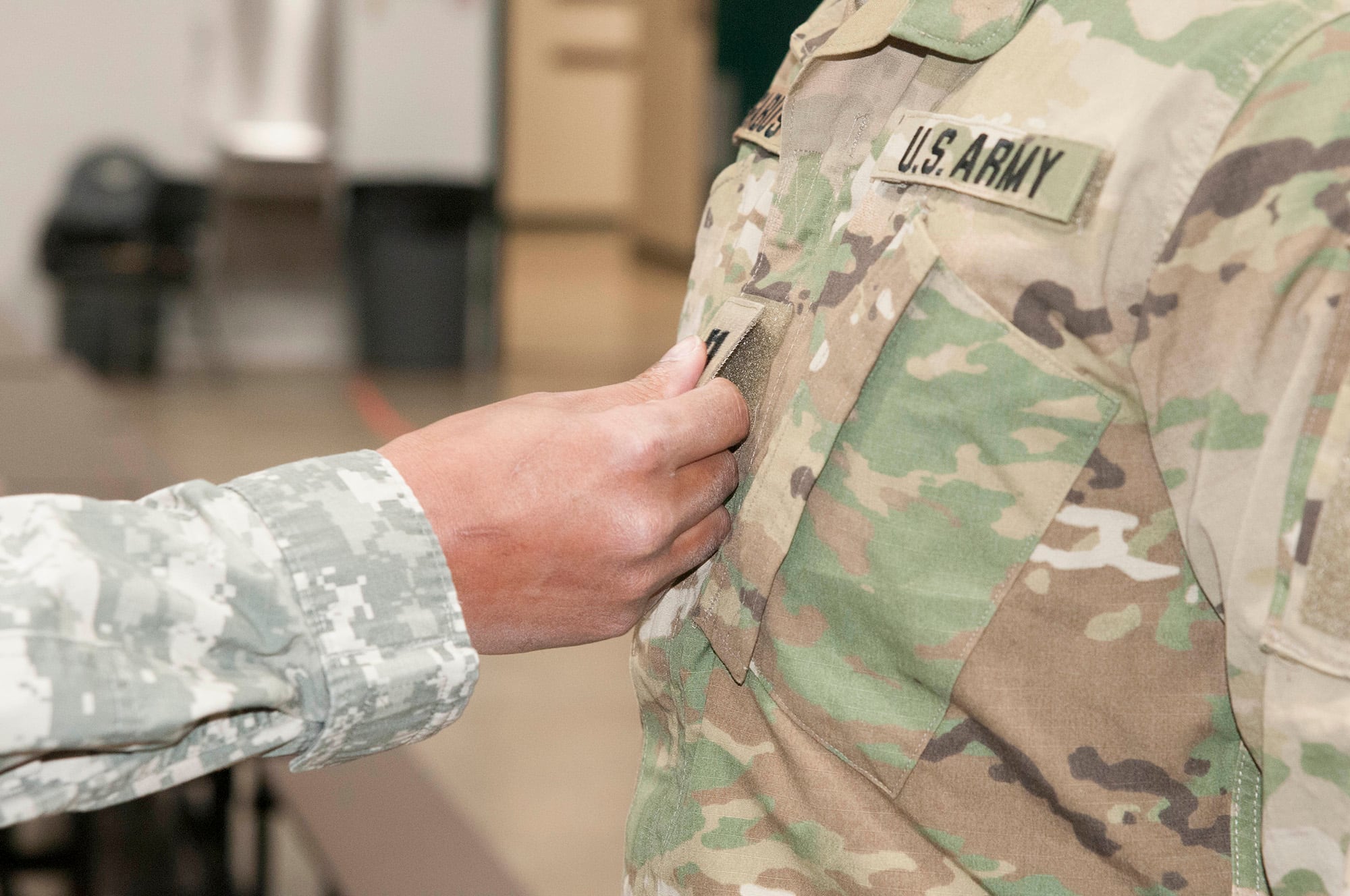A shortsighted 2004 uniform change intended to protect soldiers paradoxically has left female service members more vulnerable, but to a different, internal threat. The new Army uniform has a collar designed to be worn in an up-position to protect the neck while wearing body armor, thus changing the rank location from the collar to the chest. However, this well-intentioned shift has had unforeseen consequences in creating a possible sexual harassment and assault factor. The new rank placement has created some uncomfortable situations for male and female soldiers alike — and effectively gives service members and civilians a free pass to ogle a women’s breasts, while both parties are left in the dark regarding the other’s intentions.
The placement of the rank on the chest is a concern for many women during promotion ceremonies. It is customary during a promotion ceremony for a senior military leader to remove the old rank and replace it with the new insignia. This can make the leader and a newly promoted female soldier uncomfortable, during and after. A wrong photo angle, and bam! It looks as if the male soldier is touching a woman’s breasts. Worse, the brushing of a hand on the breasts could be perceived as a sexual assault.
RELATED
Uncomfortable gazes: Why some sailors are unhappy with the design of the new woodland cammies
There are ways around the issue. Wise leaders know they should not remove or replace the rank on a female’s chest. A woman can hold her top out away from her chest while the rank gets swapped out, preventing any possible touching of the breasts. She can remove the rank herself and hand it over to the leader, who in turn hands her the new rank. Or she can place it on her chest herself. The problem with these workarounds is that they not only break with tradition, but they further spotlight our differences. On the flip side, not considering the mechanics of how to pin on rank during a promotion ceremony places undue risk to both the senior leader and the junior soldier. While avoiding possible sexual harassment issues, these workarounds can have the unintended consequence of spotlighting gender over ceremonial merit and discounting years of female advancement in the military.
Various senior military leaders often dismiss the concern by stating they got promoted or presided over promotion ceremonies in a dress uniform, where the rank is on the shoulders. This is true of some. However, many junior soldiers get promoted in their combat uniform, and it does not consider the numerous promotions done while in the field or deployed to combat operations.
Some senior leaders quickly write off this concern by saying they have never heard this issue discussed before, but it has been, and it is, on soldiers’ minds. Many women I know say that having the rank placed on the chest is inappropriate and, at times, uncomfortable. Conversely, many male soldiers are quick to say that they do not change the insignia on the breasts during a promotion ceremony. Throughout the years, I have heard numerous male leaders awkwardly ask during a promotion ceremony: “May I touch you?” Asking this in public can put the soldier in a position where she feels like she cannot say no, even if she is uncomfortable with the touching.
There is scant evidence that the uniform change years ago led to an increase in sexual harassment or assault, but it still remains a concern within the larger issue, which has taken center stage in the past decade. Sexual assault reporting in the military has quadrupled from 2006 to 2018 and continues to increase yearly. These numbers demonstrate progress in awareness of the many issues surrounding sexual misconduct in the ranks and the steep hill the Army still must climb to appropriately combat the problem. Every little bit helps.
If the Army is serious about stamping out sexual harassment and being more inclusive, it should move the rank back to the collar. The Army does not have to wait until a new uniform is issued, it can prove it is capable of swift change when the health of its people is at stake by updating the uniform regulation and insignia location. Before producing more of the current uniform, the Velcro attachment on the chest can be removed, forcing the change in position.
The Army also should update its promotion ceremony protocols to ensure no one gets touched on the chest, no matter their gender.
The Army’s welcome push for greater inclusivity of lesbian, gay, bisexual, and transgender personnel and condemnation of sexual harassment and assault make this about more than inappropriate touching or looking — it’s about proactivity and respect consistent with the Army values it so often proclaims.
Lt. Col. Rachael Hoagland is a U.S. Army acquisition officer with 20 years of experience. She is currently a student at the U.S. Army War College. The opinions expressed in this article are the author’s alone and do not necessarily reflect the opinions of the War College, the U.S. Army, or the Department of Defense.
Editor’s note: This is an op-ed and as such, the opinions expressed are those of the author. If you would like to respond, or have an editorial of your own you would like to submit, please contact Military Times managing editor Howard Altman, haltman@militarytimes.com.





